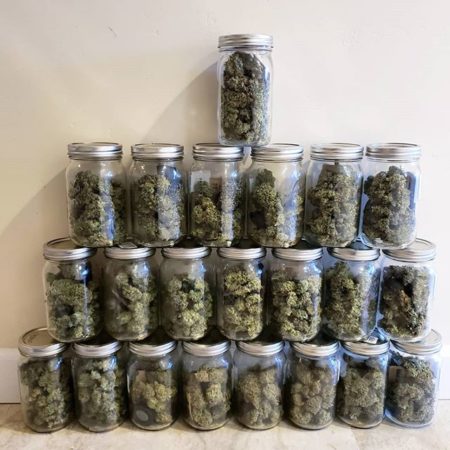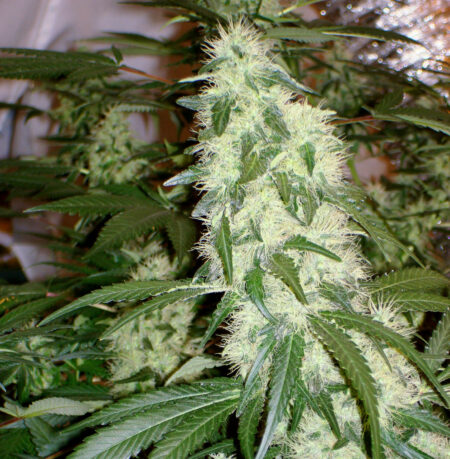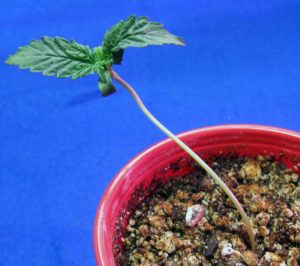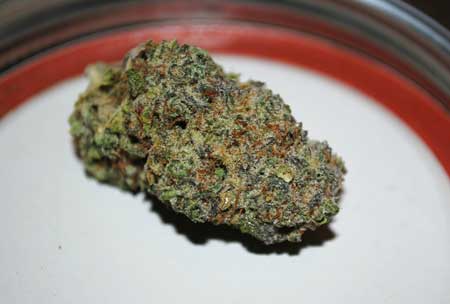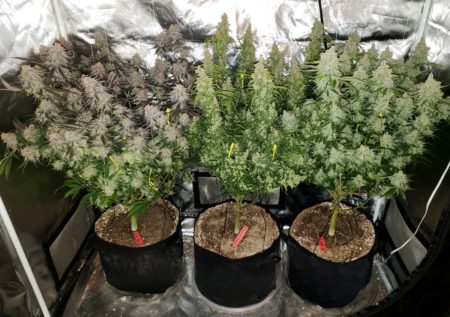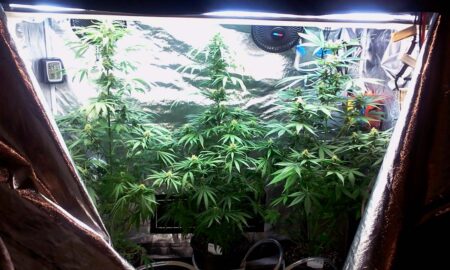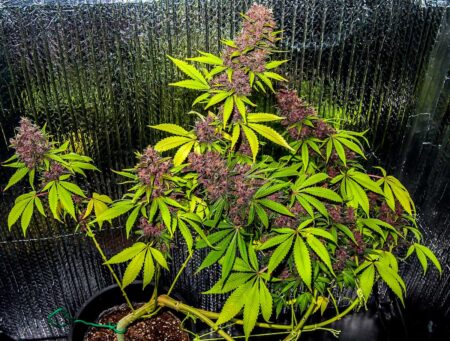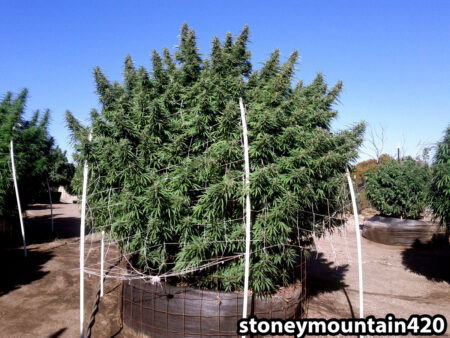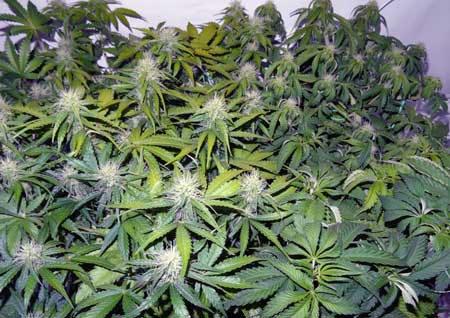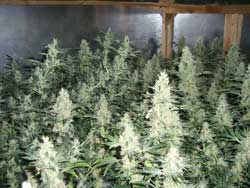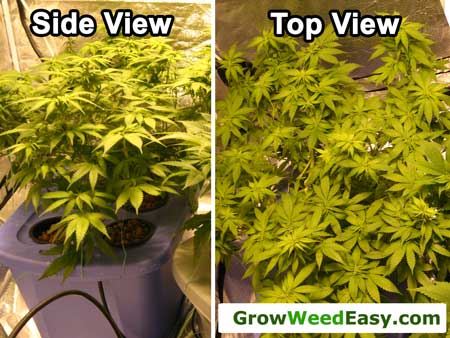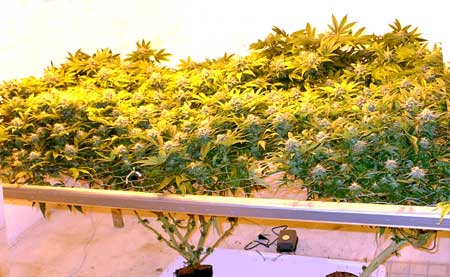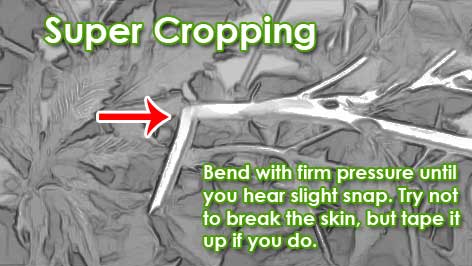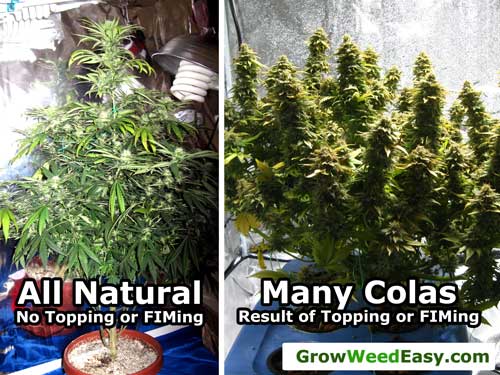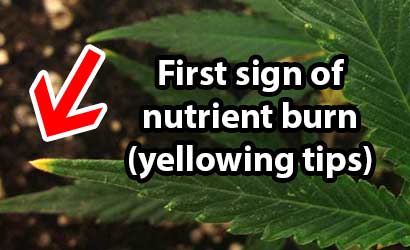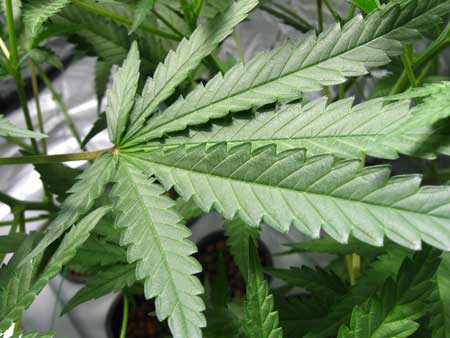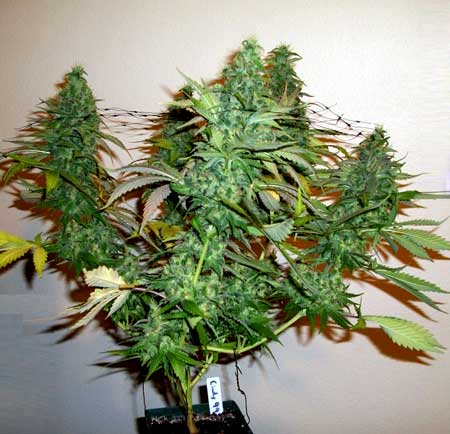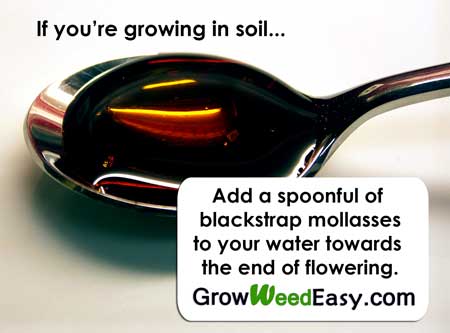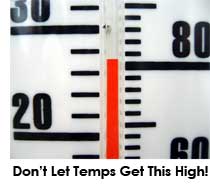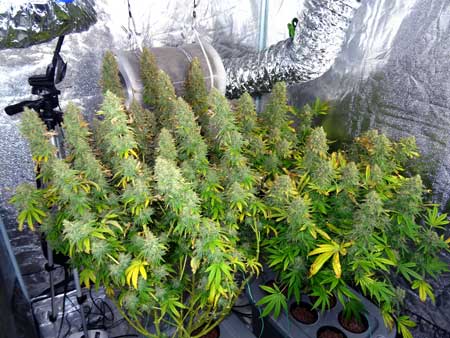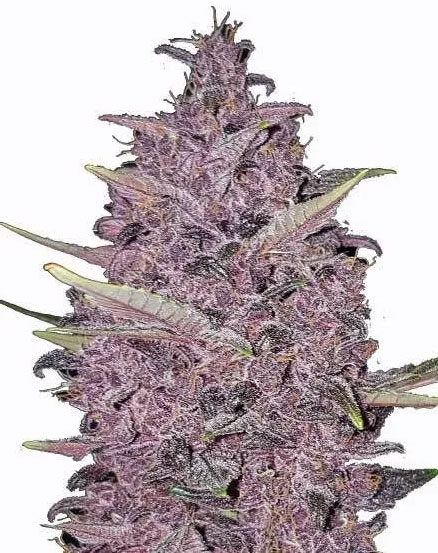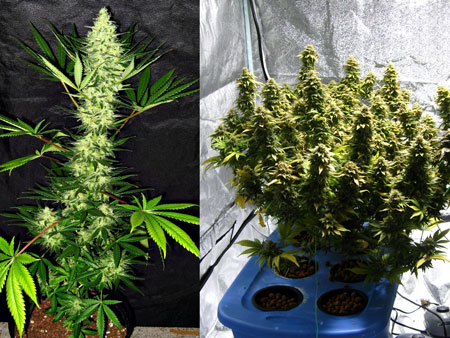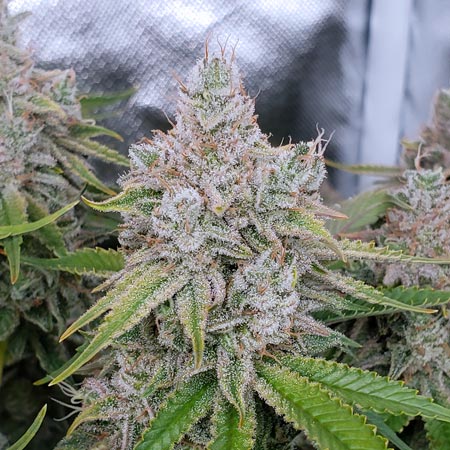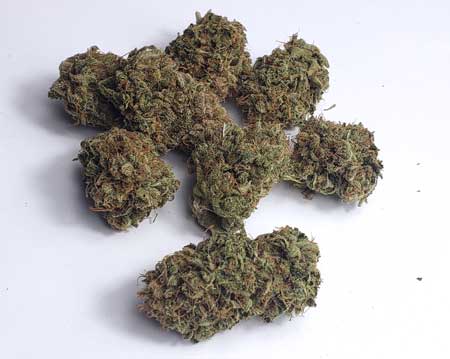by Nebula Haze
Are you a home cannabis grower that loves weed? Almost all home cannabis growers want bigger yields for less money, time, and effort. On GrowWeedEasy.com, we cover how to increase potency & quality of home-grown buds, as well as how to produce buds with a better taste & smell. But this article is about how to increase your indoor cannabis yields.
I will cover 5 easy ways to increase your indoor marijuana yields at harvest time, no matter which strains you’re growing. (Complete outdoor cannabis grow guide here.)
These 5 tips and tactics will work to increase your indoor cannabis yields with any strain. However, the genetics (strain) you start with do have a huge effect on your final results and yields. For growers who want to start with high-yielding genetics, I’ve listed some popular & potent high-yielding cannabis strains in the bonus section below the main article, along with grower notes to help you provide each strain with exactly what it needs.
Now, the first step of increasing your cannabis yields is to make sure you’ve mastered the basics of growing and know how to deal with cannabis problems that crop up.
Yet once you’ve got a handle on how to successfully grow your cannabis plants, you must begin to understand the following 5 tactics in order to get the best yields from your indoor cannabis grow space…
- Increase Light Intensity (and possibly add CO2)
- Manipulate How Plants Grow (free way to produce more bud)
- Provide Correct Amount of Nutrients (sometimes less is more)
- Control Growing Environment (make the growing environment work for you)
- Harvest Plants Properly (most importantly, don’t harvest early!)
Bonus: Genetics Has a Major Effect on Yields (plus a few recommended high-yielding strains)
1.) Increase light intensity
(and possibly add CO2 so plants can use even more light)
A lot of growers ask me how to increase the size, number, and density of their buds so they get bigger yields. The truth is, for most growers, the most effective way to increase bud size in the flowering stage is to increase LIGHT INTENSITY.
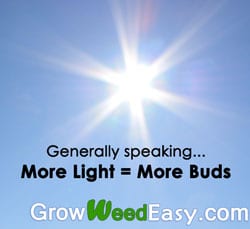
If your cannabis plant has no major problems or illnesses, then the biggest factor affecting your yields is the light intensity provided.
Light is basically food for your plants. Turning light into energy via photosynthesis is how your plants get all their energy to grow and produce buds.
As a general rule of thumb…
More Intense Light = Larger Plants & Fatter Buds = Bigger Yields
After you’ve geminated your seeds (or rooted your clones), one of the most important things to do right from the beginning is to ensure that your plants are getting enough light.
During the vegetative stage, or first stage of life, cannabis plants that don’t get enough light will tend to ‘stretch’ up toward the light with a lot of stem between nodes and leaves.
You need to provide enough light intensity to prevent young cannabis plants from stretching or growing too tall and falling over.
Example: This cannabis seedling is stretching upwards because it is not getting enough light. The plant is trying to “reach” up toward what it thinks is the sun.
This stretching is not a good thing, because these seedings almost always fall over and tend to grow into tall lanky plants unless the light intensity is increased. Tall, tower-like plants are hard to give proper light coverage in the flowering stage and will tend to get lower yields in most indoor setups.
That’s because, during the flowering stage (when plants start producing buds), high light intensity received at the bud sites is what drives the production of buds. Wait, when does the vegetative stage end?
For most small-scale indoor growing setups, finding ways to increase the amount of light getting to the bud sites throughout the flowering stage is the most straightforward and effective way to increase your final yields.
In order to grow dense cannabis buds indoors, you need strong grow lights.
Once your cannabis plant is producing buds, anything you can do to help get more intense lights to the bud sites will tend to increase your yields. Indoor cannabis grow lights provide the highest light levels close to the actual bulb or diode. The further away from a cannabis grow light, the less intense the brightness experienced by the plant.
Because of this, it is tough to provide bright light to all the buds on a cannabis plant when the colas are uneven lengths or at different heights. It is most effective and efficient to grow cannabis plants so they have a lot of colas spaced relatively close together and at the same height.
Use training to control marijuana plant height.
Cannabis growth patterns are something you have complete control over in the vegetative stage (addressed in the plant training section below) and taking the time to manipulate your young plants to make good use of your indoor grow lights is one of the best ways to increase your yields with the same lights.
Training plants so many buds are all about the same height from the grow light like this…
…Results in higher yields than letting plants grow naturally like this. The natural “Christmas tree shape” of a cannabis plant puts only one bud on each plant close to the grow light, and therefore only one bud per plant gets big. Not the ideal way to use your grow space!
Yet after flowering has already started and buds are already formed, there’s not much you can do about wildly uneven cola height without possibly hurting your plant. Supercropping is your best bet to tame out-of-control cannabis plants, but it is a “high stress” technique and should only be used in an emergency in the flowering stage. So if your plant is already making buds, you’ve just got to do your best to provide the most intense light possible to all the buds until harvest, without overheating or harming your precious growing “colas” (a nickname for long thick buds). It’s important to keep plants cool during the flowering stage, as high temps can actually burn off terpenoids (smell/taste) and cannabinoids (potency), lowering the quality of buds even as you may be increasing the overall yields at harvest.
For the best results, you want all your buds directly exposed to intense light. Being in direct light seems to cause buds to swell up much more than when buds are hidden by leaves.
On any cannabis plant, no matter the shape or size, you’ll noticed the best buds are nearly always the buds at the top of the plant which are getting direct light.
Buds in the “ideal light zone” get big, dense, and potent. However, buds below that point tend to stay small and have reduced THC levels (we’ve confirmed this at the lab!).
Why do cannabis buds need to be exposed? Here’s a common theory. In the wild, cannabis buds are pollinated by the wind and need light from the sun to power the growth of seeds. A cannabis bud in the wild that is not exposed to air and light is unlikely to get pollinated, so the plant tends to not put much effort into the hidden middle and lower buds on the plant. Only buds that are exposed to air and bright light will fatten up and produce max THC.
In the wild outdoors, the hairs on buds are meant to catch pollen out of the air.
How much light is too much light?
Most indoor growers are unlikely to provide too much light to their marijuana plants unless they’re using overly powerful grow lights in a small space, or from keeping the grow light too close to the tops of plants. Cannabis plants can use a surprising amount of light when they’re healthy and given a good growing environment. In fact, healthy cannabis plants can handle higher light intensity than almost any other crop including sun-loving melons, tomatoes, and corn!
Outdoors in the wild, cannabis grows best in direct sunlight for as many hours a day as possible. This plant produced 11 pounds of buds after growing in the desert with full sun from morning until night.
However, if you notice the top leaves of the plant directly under the grow light are looking pale, yellow, discolored, burnt, or otherwise not green (in other words, the leaves show signs of light stress), it’s a signal to move the grow light further away. Sometimes light stress is simply the result of the light being too close. Other times, it may be a sign the plant is suffering from a nutrient problem, or the environment isn’t right (for example it’s too hot). Regardless of why you see light stress, the solution is always to move the grow light further away until you see the plant is growing healthy and happy again.
If you see stress on the leaves closest to the grow light (yellowing, burnt, spots, etc), turn down the power or move the grow light further away.
How much light is too much light for weed plants?
- Fluorescent grow lights are relatively weak and can be kept as close to your cannabis plants as possible as long as it’s not hot or the buds are growing into the lights.
- LED grow lights generally should be kept at least 12″ away for 100W and under, 18-24″ away for 200-400W LEDs, and 24″-36″ for 500W+ LEDs. This helps achieve the best growth. The distance needed for LED lights varies from model to model, so it’s important to listen to the manufacturer’s specifications when it comes to deciding how close to keep LEDs to your plants. Modern LED grow lights are very powerful, and It’s very easy to light-burn your plants with LEDs.
- MH/HPS grow lights usually should be kept 1-2 feet away, though the distance needed depends on the size of your bulb. How Far Away Should MH/HPS Grow Lights Be From My Plants?
- With all grow lights that get hot, it’s important to have some sort of cooling or exhaust system in place to prevent heat stress and help bring fresh CO2 to the plants.
Learn more: How far away do I keep grow lights?
Learn more about upgrading your indoor grow lights or see examples of new grower shopping lists.
Keep in mind…
- Aim for a maximum amount of light – If you keep increasing the light intensity in your grow room (or moving high-power lights closer and closer), you will eventually reach a point where you max out on the light your plants can use. This is about where you want to stay, as long as the plant stays healthy.
- Too much light is bad – If you consider that light is like food for your plant, maxing out the light is like putting so much food on the table that your plants hurt themselves trying to finish their plates.
- Watch out for light stress – Plants provided with too bright light can experience light burn even if temps are cool when the light intensity gets too high. Some strains are more susceptible to light burn than others.
When you’ve reached the ultimate max of light that your plants can use, you still have one extra trick up your sleeve to further increase your yields. You can give your plants the ability to use even more of that light (and increase your bud yields even further) by increasing the CO2 levels in your grow room during the flowering stage.

The way additional CO2 works is it increases the amount of light your plant can use at very high light levels. With smaller grow lights (under 300W), it is unlikely that your light is bright enough to bring your plants to the point where they are being limited by CO2. Adding extra CO2 when it’s not the limiting factor of growth is almost always a waste of time and money. For most plants, providing a source of fresh air will give plants all the CO2 they need. But if your plants have maxed out on light, artificially raising CO2 levels in the grow room can help plants use even more of the light and turn it into energy for growth.
Just remember that it takes a lot of light for your cannabis plants to hit this light saturation point. so unless you’re using high-powered lights like a 1000W HPS grow light (or high-power LEDs) and keeping the lights incredibly close, your plants are probably able to use all the light they’re receiving as long as they’re well taken care of and in a good environment.
Most Important Point about CO2: It increases the max light a cannabis plant can use.
Adding CO2 to the cannabis grow room does not directly increase yields. CO2 only increases the amount of energy your plants can produce under very high-intensity light levels. If plants have not maxed out on light, adding more CO2 will not increase yields.
Another important point about using CO2 – in order for CO2 supplementation to be effective, you generally have to seal off the grow area and pump in enough CO2 to dramatically impact the CO2 PPM levels in the air. CO2 is dangerous to humans at these high levels, so be careful to protect yourself!
Learn more about CO2 and its relationship to light intensity and marijuana yields here:
https://www.growweedeasy.com/co2
Learn about grow light options, so you can pick the most intense light possible for your grow space:
https://www.growweedeasy.com/cannabis-grow-lights
Next, you’ll learn how to manipulate your plant so that you can get more light coverage to your bud sites, using the same grow lights you already have.
2.) Manipulate plant structure (bend, net, top, etc) so all colas received strong & even light coverage
The basic idea behind plant training is that bigger, wider plants with many evenly spaced colas produce bigger yields. This is directly related the idea that the best buds grow at the top of the plant close to the grow light.
Manipulating your plants is a basically free way to increase your yields, without needing to change anything else about your setup. You don’t need to buy expensive nutrients or get a new grow light for this to work for you.
Learn about all the ways you can control the size and shape of your cannabis plants.
Manipulating the plant in a way that doesn’t involve actually cutting your plant is often referred to as “LST” in the cannabis growing world, which is short for “Low Stress Training.”
The idea of LST is to manually force your plant to grow flat and wide, as opposed to tall and thin, usually using bending.
Here’s an example of a plant that has been LST’ed to grow very short and wide.
Notice how the plant is very short when viewed from the side, but when viewed from above the plant has a lot of leaf surface area. All those leaves are like little solar panels, getting energy from your grow light.
This flat plant shape allows the whole plant to better use your existing grow lights since a greater percentage of the plant is closer to the light source, which means that more of the plant is getting exposed to brighter light intensity.
Any LST attempts should almost always begin when the plant is very young, as this type of “table” shape is much harder to achieve once the plant has developed into a triangle shape with a tall main cola.
Learn more about LST here:
https://www.growweedeasy.com/low-stress-training-lst
A variation of LST is when growers use a screen or net to act as a guide with which to force plants to grow flat. This technique is known as ScrOG (short for “Screen Of Green”).
ScrOg is how you achieve something like this…
Notice how practically the whole plant is getting direct exposure from the lights. All that direct, intense light will be turned into energy by the plant, fueling bigger buds and overall yields.
In order to use ScrOG, you will need to invest in a screen and take time during the vegetative and beginning of the flowering stage to train your plant to grow along the screen.
Learn more about how to ScrOG here:
https://www.growweedeasy.com/lbh-scrog-tutorial
Another popular and easy-to-learn plant training method that increases yields is known as “Supercropping.”
Basically, supercropping means bending your plant so that individual stems lay flat and form a “knuckle” where they were bent.
Supercropping can be used alongside any other plant training method or by itself. Any time you notice any colas growing taller than the others, but are unable to use bending to pull down that errant cola out and away from the center of the plant, you can use supercropping to force any plant to bend.
Super Cropping Marijuana Tutorial: Simple Secret to Bigger Yields:
https://www.growweedeasy.com/how-to-super-crop-marijuana
Now when it comes to plant training, there are lots of methods that involve actually cutting your plant, or removing stems and/or leaves.
As far as methods that involve actually cutting the plant, you have two main options. One is to ‘top’ the plant and one is to ‘FIM’ the plant.
With both techniques, you remove some of the growth on the end of the main cola of your young cannabis plant, which causes the plant to stop focusing on one cola (like a Christmas tree) and instead to create many bud-laden colas (grow a sea of buds).
This will give you an idea of how the plant growth patterns change as a result of topping or FIMing a cannabis plant at a young age.
Learn more about topping & FIMing young cannabis plants.
A very popular form of plant training that utilizes topping and really seems to simplify the whole process for a lot of growers is known as main-lining or manifolding.
Learn about manifolding right here:
https://www.growweedeasy.com/manifold
Now I will mention the next technique so this section is complete, but I highly recommend against using this technique until you already have had at least a few successful grows under your belt. I also recommend mastering the other forms of plant training first, like all the ones mentioned above before trying this technique.
Defoliation can slow down or stunt your plants if you go overboard. Cannabis plants need their leaves to “eat”! Defoliation has in important place in every grower’s plant training repertoire, yet I also believe that most growers would do better to take it slow the first time or two, and focus on mastering the other training methods before ever going crazy with defoliation.
Now that you’ve been warned…
(Experienced Growers Only) Controversial Defoliation Increases Marijuana Yields:
https://www.growweedeasy.com/defoliation
Next, learn how using less nutrients can actually result in bigger yields.
3.) Get the Right Cannabis Nutrients (and don’t overdo it!)
Your cannabis plant needs nutrients to grow, no doubt about it. But which nutrients should you give them?
How much nutrients do your plants need to grow their best?
Learn everything you need to know about cannabis nutrients here.
(and get custom cannabis nutrient schedules)
But just getting the correct kind of nutrients and following a nutrient schedule isn’t the only step you should take. Unfortunately, for whatever reason, many growers tend to provide too high levels of nutrients to their plants. This is most common when growers mix many different nutrients and supplements together, without understanding what the plant needs to grow well.
As a grower, it is important that you learn how to tell when your plants are showing signs that they’re receiving too high levels of nutrients.
The most common sign that your plants are getting too much nutrients is “nutrient burn.”
Learn more about nutrient burn.
Growers often refer to nutrients as “food” for your plants. When you talk about it that way, it intuitively seems like giving more “food” would result in bigger buds, but is that really the case?
As we learned earlier in the section about light intensity, the real “food” for your plants is light. Light is what your plant turns into energy through photosynthesis, and this energy is what fuels vegetative and flowering growth.
Then what do the nutrients do? They’re like little helpers that give your plant what it needs to carry out the process of photosynthesis and growth.
I like to think of nutrients like vitamins for humans. While humans need to get certain vitamins to survive, I want you to consider that people should never eat multivitamins like candy. In fact, if you give people more vitamins than their bodies can use, they will actually get very sick.
Nutrients are important to healthy growth, but it’s important to understand that going overboard will cause more harm than good.
While many growers are trying to raise nutrient levels as high as possible, I have gotten better results (yields) when I simply try to avoid providing too little or too much nutrients.
Healthy cannabis leaves appear green and uniform. As long as your leaves look like this, without signs of spots, discoloration, curling or other problems, you have nothing to worry about!
Cannabis plants seem to produce the best yields when nutrient levels are kept on the lower end compared to what is recommended with most nutrient systems; I try to give enough nutrients to prevent nutrient deficiencies throughout the grow while avoiding nutrient burn. I rarely raise nutrient levels unless I’m noticing signs that this particular plant is a heavy nutrient-user and needs more. You will notice that different plants often require wildly different levels of nutrients.
As long as your cannabis is not showing signs of nutrient burn or nutrient deficiencies, you’re in the “sweet spot” for optimum growth and yields
When it comes to growing in soil, one of the best things you can do is compost your own super soil. Composted super soil can be made completely organically, and will provide your cannabis plants with all the nutrients needed throughout your grow. That will make it so that you don’t have to worry as much about nutrients or deficiencies, and you can focus your time and effort on maintaining your plants.
For growers using bottled nutrients, including hydroponic growers as well as many soil growers, I usually recommend you start using half (or even less) of the suggested amount of nutrients listed on most nutrient schedules. There’s a lot more information about this in my main article about cannabis nutrients. I generally only ever raise my nutrient levels when I notice that this particular plant is a heavy nutrient user (the lower leaves are starting to turn yellow and die – especially in the vegetative or early flowering stage, though it’s normal to start losing leaves the last month before harvest).
Slightly lowered nutrient levels seem to be especially important to bud production during the last few weeks before harvest time.
It’s natural for the lower leaves of a cannabis plant to start turning yellow as harvest time approaches.
It’s natural for the plant to start losing leaves as the plant puts all energy into making buds, and unfortunately, many growers respond by ramping up nutrient levels late in the flowering stage. Unfortunately, adding too high levels of nutrients during the later part of the flowering stage, especially nitrogen tends to hinder the plant from developing buds properly.
Yet if you keep nutrient levels at the recommended dosage and allow the vegetative growth to begin to die away during those last few weeks, the buds seem to swell up more compared to a plant that is kept dark green all the way to harvest. By keeping nutrient levels lower as harvest approaches, you also help ensure that there is no leftover “nutrient taste” in the buds which never got the chance to be used up before harvest.
Bonus Tip For Soil Growers: Provide a source of sugar (blackstrap molasses works great) towards the end of the flowering stage to increase bud weight
By supplementing your cannabis roots with extra sugar towards the end of flowering, you help improve the flavor of your buds while also fattening buds up.
This is especially effective for those growing organically, as this works synergistically with the beneficial microbes in your soil
There are many commercial supplements that claim to fatten up buds and improve flavor, but most of these work by adding simple sugar.
If you’re growing in soil and looking for a cheap yet effective alternative to those expensive supplements, you can add a little bit of regular blackstrap molasses (a teaspoon per gallon) to your water every time you water your plants during the second half of the flowering stage.
Please Note: It is not recommended to use molasses in a hydroponic grow setup.
Speaking of how indoor growers can get better yields by providing cannabis plants with the exact right environment…
4.) Control Temperature (and humidity)
A good growing environment is crucial to the health of your plants, as well as your final potency and yields. When the temperature (and to a lesser extent the humidity) is too high or too low for your plants, your plants will not grow properly and buds won’t fatten up no matter what else you do.
Too high temps late in the flowering stage can also reduce the potency of smell of your buds by burning away cannabinoids and terpenes.
By controlling temperature and humidity, you can actually increase the smell and potency of your buds at harvest.
If there is a particular source of heat that is harming the plant (like a hot grow light), you’ll know because the leaves closest to the source of the problem will wilt and turn a brownish color. Learn more about how cannabis plants respond to heat stress.
This step-by-step tutorial shows you exactly how to control the temperature in the grow room
Now that you’ve learned how to provide the best environment and growing conditions for your cannabis plant to produce the biggest yields indoors, there’s one last thing you must do to ensure the highest yields possible…
5.) Wait until the right time to harvest
For most strains of cannabis, there is a 2-3 week window during which buds can be harvested. When growers harvest before the proper “harvest window”, it can reduce your yields (and potency).
By allowing your buds to ripen fully, you will maximize your overall yields. I’ve seen buds gain up to 25% additional size (at least visually) in the last 2-3 weeks before harvest. If I’d harvested these buds earlier, I would have dramatically lowered my overall yields.
Another benefit of waiting until the right time to harvest is you can choose to harvest your buds when they have the exact effects you’re looking for. Harvest earlier for a more buzzy daytime high, and harvest later for a more relaxing, couchlock experience
Learn how to tell when your cannabis buds are ready for harvest:
https://www.growweedeasy.com/harvest
And also make sure you professionally cure your newly harvested marijuana buds every time…
https://www.growweedeasy.com/curing
Harvest your cannabis at the right time to increase your yields
Genetics is Key to Marijuana Potency and Yields
While all the tips and tactics above will help increase your yields with any marijuana strain, the genetics of your plant also play a huge role in how the plant grows, how the buds fatten, and ultimately your yields.
The strains available today get much higher yields and are much more potent than any strains that were around even a decade ago. Strain potency, yields, and ease of growth have been improving steadily over the last several decades as hundreds of growers around the world are constantly breeding new strains and improving on old favorites.
Learn about ordering cannabis seeds online
So even if you do everything right to get bigger yields, you may not get buds as big as the ones you see online or in cannabis magazines. It’s an unfair comparison if you’re using so-so genetics.
Investing in a high-yielding strain can be one of the best ways to increase your final yields (as well as the overall quality, potency and smell of your buds!).
Start With A High-Yielding Strain!
Listed below are 3 proven high-yielding strains which consistently produce top-quality buds:
Kushberry Moonrocks by MSNL – Remarkably Strong
Although we haven’t grown the Kushberry Moonrocks strain ourselves yet, according to our readers this enchanting new strain has remarkable effects and looks/smells beautiful. We were pleasantly surprised to find out it also tends to produce high yields.
Aurora Indica by Nirvana – Stays Short!
Attention stealth growers! If you want a high-yielding plant that is quick to harvest, and actually stays short, than this may be the strain you’re looking for! For those of you growing in a smaller setup, a plant that naturally stays short and bushy can make growing much easier, and this strain will maximize your yields!
Growing tips: This strain seemed to do better with relatively low levels of nutrients compared to some other strains. We started at half nutrient strength when growing Aurora Indica for the first time (picture in upper right – yielded a little over 7 ounces), and actually had to take nutrient levels lower to almost 25% strength to get the best results in flowering. Aurora Indica plants are easy to grow and respond well to training and especially supercropping. Harvest at 7-9 weeks for a stoney “couchlock” effect.
Buds: Dense indica buds that are covered in trichomes, causing a heavy, almost sedating effect (“couchlock”). Our buds smelled earthy, with some fruity, almost minty tones underneath.
Zweet Inzanity by Ethos – Big Yields!
Zweet Inzanity impressed us with her high yielding power and big, round, hard nugs.
Growing tips: This forgiving strain is extremely easy to grow, and responds well to FIMing/topping/LST and other training methods. It gets to a nice size – not too tall, not too short – and about doubles in size after the switch to 12/12. This strain takes about 2.5 months to finish flowering, and rewards you with great yields and chunky, round baseball buds. It tends to do best at relatively high levels of nutrients – we got great results feeding her at full strength.
Buds: Big yields. Dense, hard buds that sparkled, and highly potent yet friendly social vibes when smoking. Our buds smelled sweet and delicious.
FOR SERIOUS GROWERS ONLY
You’ve told me you’re looking for a complete guide to growing marijuana that covers everything, from beginner to ultra-advanced.
And the techniques on this page are only a few of the many paths to getting seriously killer harvests. If you want to learn ALL the secrets…
Learn from the best!
Invest in the most advanced Grow Bible Available: Growing Elite Marijuana
Total care explained step-by-step… indoors… outdoors…
Monster cropping… advanced growth control… bud production secrets… and much, much more…
Over 700 pages of pictures, tutorials and advanced insider tips!
Get Instant Access to It All Right Here: GrowWeedEasy.com/growing-elite-marijuana
I thought I already knew it all, but after I went through this grow bible, I discovered that there were still new, easy ways I could increase my yields and grow even more potent buds!
-Nebula
Jump to…
What type of nutrients are good for cannabis?
How to fix cannabis growing problems – complete guide
7 Tips to Growing Top Shelf Buds
See all grow topics on GrowWeedEasy.com!

